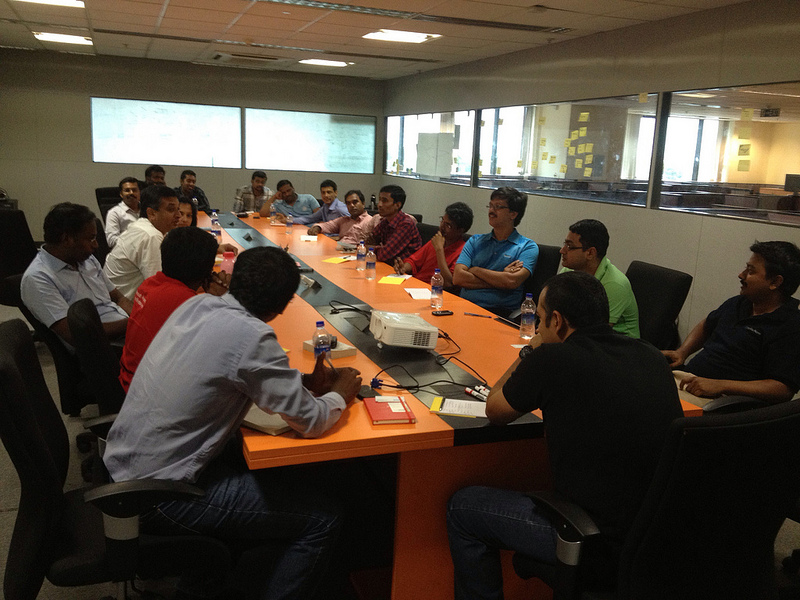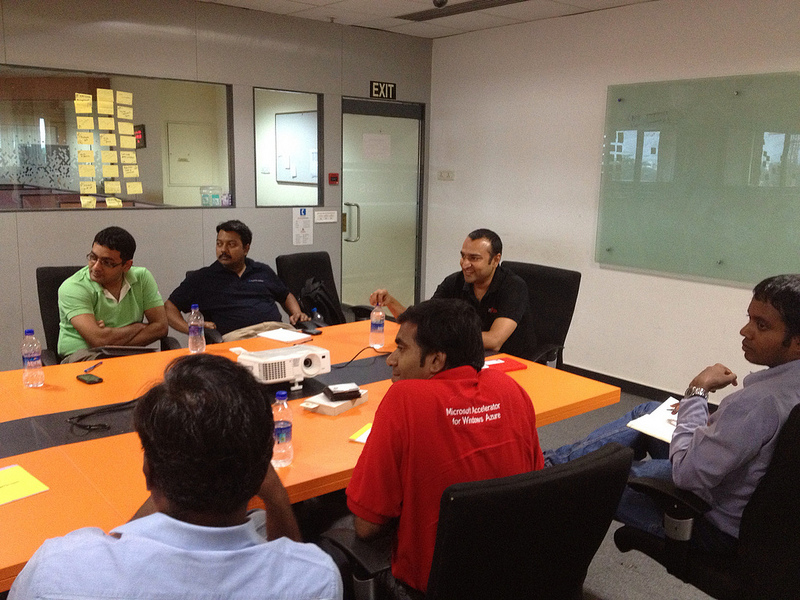It is a cliché to say product management is both art and science. The product manager’s function encompasses a range of tasks, only limited by the company’s vision. Deep Nishar, Senior VP, Products and User Experience, at LinkedIn, told the audience at Nasscom Product Conclave 2012 that, “product managers should have brain of an engineer, heart of a designer and speech of a diplomat.” The product manager with such an expanse of skill set is hard to find in India. With the intention of bringing experiential learning and to ignite conversations among product entrepreneurs so that they learn from each other, iSPIRT, the think-tank for startups, is organizing Playbook Roundtables that facilitate transferring of key knowledge through an open discussion. In the fifth Playbook Roundtable organized at Chennai by iSPIRT, Sridhar Ranganathan, who has rich experience as a product manager, shared anecdotes quoting from positions he held at Zoho, Yahoo, and InMobi to define who a product manager is.
Sridhar’s naval architecture career did not last long. A chance meeting with Sekar Vembu, founder of Vembu Technologies, landed him a job at AdventNet (all three Vembu brothers, Sridhar, Sekar, and Kumar were part of AdventNet then). He was placed to manage a team that was working on a product. Not a geek, he took three months to understand Java Script. A management shake-up at AdventNet properly designated him as product manager. Then began his tryst with product management. At Zoho, the discipline of product conception, execution, and delivery was practiced with a high level of checks and balances. With a small team and margin for error almost non-existent, Sridhar learned to work with constraints to deliver software products. Moving on, he headed the team working on Maps at Yahoo. This proved to be challenging as managerial oversight was nonexistent but any senior level meetings thrashed any feeling of achievement. Sridhar by now had crafted the art of product management and he had an excellent team to work with. Then at InMobi, his challenge was scale. He was able to successfully navigate through the phase where InMobi’s ad impressions went up from 50 million per month to 2 billion per month.
The product culture
There were 15 participants from OrangeScape (Suresh Sambandam and team), Fresh Desk (Smrithi, product manager), Kallos (George Vettah), LPCube (Lakshman Pillai), Array Shield (Vasanthan Kumar), ContractIQ (Ashwin), Twenty19.com (Karthikeyan Vijayakumar), RailsFactory (Mahendran), Fix Nix (Shanmugavel and team), Social Beat (Suneil Chawla), and Humble Paper (Vivek Durai), represented by its mostly founders. Suresh was keen to know how with a small product team (Zoho instituted a culture of a seven-member team to work on a product), Zoho was able to recruit college drop-outs and train them to work on products. Sridhar said if the company is big enough and has a strong culture (such as escalation of wrong codes, build times, and customer complaints to the highest level if not done within a set time frame), such experiments are possible. In Google, you know the person who is going to work because of the recruitment process but at Zoho, you have to groom the person.
Sridhar strongly emphasized that data plays a big role in product management and went on to say that “if you build technology products, your core data model and technology stack determines your business model.” He listed various challenges faced by organizations such as SalesForce to remove duplication of data. For example, to change a primary key, Zoho needed 14 months. George Vettah added that Ramco had to reengineer its offering after SAP effectively took away its market share. Sridhar gave away one more of his product philosophies: “If there is a constraint in the product, and if you have the market, you could only pray that the market does not go away till you reengineer the product.”
Education to Product: the product continuum
Through a graph, he illustrated the various stages of the product continuum: Taking problem complexity on one axis and scale or impact on the other, he said, for low problem complexity and low scale, education (of the customer to tell them why your product) is needed. At the next level, process needs to be defined (to quote an example, the process of how to apply for a passport online), Still further, at the higher complexity and more users, you need to define the procedure (how to fill in the form of the passport application), and still at a higher level, you need to provide a solution to the problem. But for a very complex problem with the highest impact (nonlinear), you need a product. So by understanding the need and the impact, you can execute your product strategy.
The product manager
He said that the fundamental role of the product manager is to identify the product that has the maximum probability of success. “The success metrics of a product determines the product manager’s action,” he added. This was followed by an interesting discussion on how the founder passes the baton to the next product manager as the company scales up. Kaushik from OrangeScape provided a fine example. The product manager has to work on three aspects: hygiene, spoiler, differentiator. A hygiene part of the product is not impactful but without it the product wouldn’t work. The spoiler is beating the features of the competition, and differentiator is the difference that your product makes. Further, at the first level, the product manager has to find users for the product, at the next the user level should be scaled, say from 2000 users to a million users, and further at the next level, if there is a drop in user level due to competition, the project manger has to devise ways to retain the user level. These three different stages require product mangers of different skill sets.
Finding the right product manager
Finding the right product manager is a challenge. Sridhar said the right product manager is identified by his ability to align with the vision of your organization and should have the potential to grow with the organization. For him, the hiring decisions are not done in a day. Sometimes it stretches to two months as he engages in long conversations with the potential candidate. Then an interesting discussion on organization structure where most of the times the product manger is asked to “influence without authority” was discussed. “The product manager has to be temperamentally strong,” stressed Sridhar. In many organizations, the developers and engineers are not direct reports of the product manager. Engineering team is headed by a senior engineering head. But your input on the engineer decides his grading. So at most positions, product managers have to work with teams that don’t directly report to them. By telling the team the importance of the product and by selling the vision (by exercising influence without authority), you need to get the work done. Smrithi, from FreshDesk, said influence without authority was one of the attributes looked for in a product manager in her earlier employment. George Vettah added that research has shown that for product managers did not possess strong right brain thinking (creative) or left brain thinking (analytical), but somewhere that balanced both.
Building the product, managing the team
The ideal way to enforce build discipline is to have a release ready after every build. This is practically impossible but if achieved, gives the product management team an edge on product release. This also makes sure that the product isn’t broken. Several R&D prototyping needs to be done before the product is handed over for completion to the engineering team. Once the product is fixed and passed to engineering team, it’s difficult to tweak again. So spend as much time in R&D rather than “release early, release often.” Sridhar said managing multiple products only requires you to have user interface and data operability aligned.
The product manager has to find the right time to pivot. Sridhar asked the participants to read Lean Startups by Eric Ries. The author has dwelt at length on pivoting. Failures are part of product management but how the product manager negotiates such down moments counts. The product manager has to be mentally strong. For any of the product manager initiatives, winning the trust of the stakeholders is key, stressed Sridhar. He added that the satisfaction of seeing the product completed after your visual thinking on it is immense. He said that the product manager’s role is cerebral as it involves a lot of thinking.
There were intense discussions when each of the issues was discussed among the participants. Vivek Durai, who is now solely developing a product, said his priority listing has changed and his to-do list has a lot of elements to add up to. Kaushik said his respect for his previous product managers had risen after this discussion. Suresh felt some more improvements can be made to the discussion format. Suneil felt that the discussions were insightful and opened his world to product management. Karthikeyan Vijayakumar said he would implement a lot of stuff from the discussions.

















